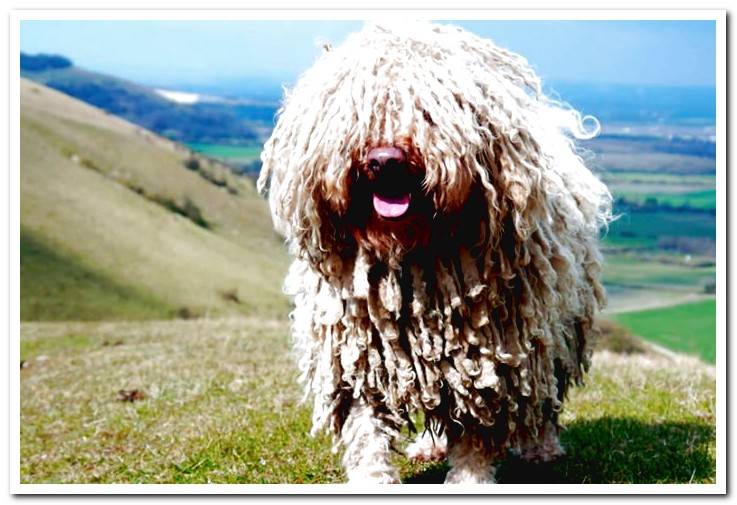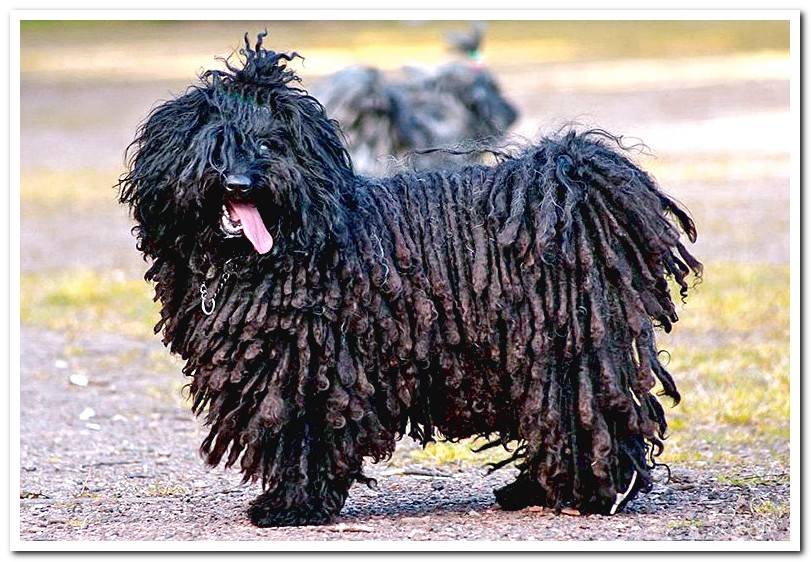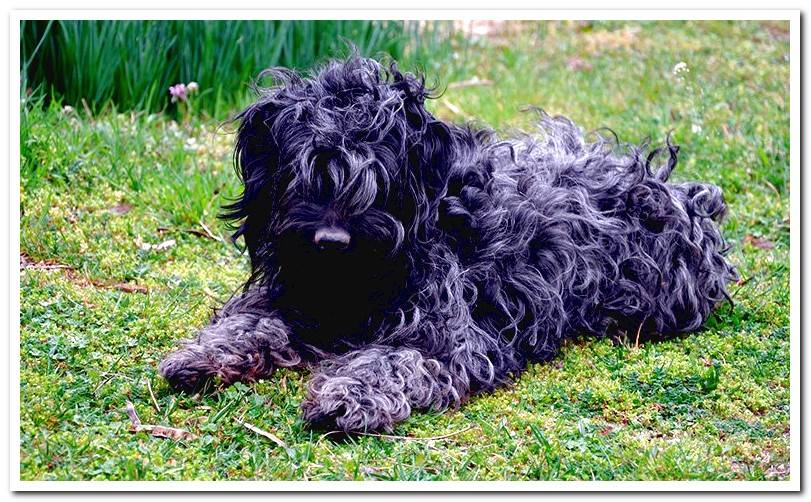
The Puli is an unmistakable dog, as its curious coat has tagged it with the name of “dreadlocked dog”. Its coat is made up of thick and tight strands of hair strands, these precious and abundant dreadlocks make it an easy breed to identify.
Its origins go back two thousand years ago, when it could already be found on the Asian continent. Amazing truth? Let’s see in detail all the characteristics of this impressive breed.
Index of contents
- 1 Origins of the Puli, the rasta dog
- 2 Physical characteristics of the Puli
- 3 Personality and character of the Puli
- 4 What care does a Puli require?
- 4.1 Training, socialization and exercise
- 5 Common Puli diseases
Origins of the Puli, the rasta dog
The Puli it is one of the oldest dogs that exist. Its origins date back to the 3rd century BC., at which time it was brought to Europe by the Magyars.
The Magyars were an Asian nomadic tribe that used the Puli as a sheepdog. On their travels, they took the Puli to Hungary, where it established itself to fulfill the same tasks.
Physical characteristics of the Puli
You are facing a medium-sized dog, although the Rastafarian fur makes it look more corpulent. The International Cynological Federation standard notes that the construction of the body is square, light and proportional in terms of the length of the body and limbs.
The head is round and somewhat small It has a black nose and a short snout. The eyes are oblique and friendly look, the color of the iris is dark.
Also, the ears are V-shaped and fall to the sides of the head. The tail is short and high insertion, it is usually lost between the fur.
Puli puppies have curly fur, but the curlers become cords as they grow; they reach their final appearance at 3 years. The coat is double, rough on the outside, thin on the inside. The hair grows to the ground and often covers the dog’s face.
As for color, it comes in 5 varieties: pure black, black with reddish or gray areas, fawn with a black mask on the face, gray and pearly white without spots.
|
|
Height between 39 and 45 cm in males and between 36 and 42 cm in females |
|
|
Weight between 13 and 15 kg in males and between 10 and 13 kg in females |
|
|
Fur on laces, variety of shades |
|
|
Loving and kind character |
|
|
Regular health, prone to some diseases |
|
|
Estimated life expectancy between 10 and 15 years |

Personality and character of the Puli
The Puli It is a loving and kind dog. If you have children at home, they will love to play with them and be pampered. Also, enjoy exercise, so spending time with your little ones will help burn energy.
Thanks to his past as a sheepdog, this breed is very intelligent and learns easily. Familiar and faithful, it also works as a good watchdog, as it is reserved with strangers. She loves being part of the home dynamics and gets along well with other pets.
Despite his heavy appearance, he is a skilled dog who has even excelled as an acrobat. It is ideal if you are looking for a nice dog to accompany you and to whom you want to spend time teaching tricks and games.
What care does a Puli require?
The Puli requires specific care on the coat. Before 8 or 10 months, all you can do is bathe him, once or twice a month.
Near the age of one, the coat begins to take the cordoned shape, you will notice it because it feels matted. Further, the cloak will naturally split into tufts. At this stage, help your dog by forming finger cords, you should do this regularly for the next 6 or 9 months.
After this stage, the Puli will have the appearance of a cordoned coat typical of the breed. After this, you should only bathe it when the cloak is dirty and, after the bath, separate the cords again so that they are tidy. You can do this process yourself or take it to the dog groomer.
Like any other breed, it is convenient to start the socialization of the Puli as a puppy, both with people and with other dogs.
Learn easily and prefer the positive reinforcement training, but avoid very repetitive series, because you will get bored and will not mind disobeying. Like other grazing breeds, he’s very independent so he needs a steady hand to guide him, while still being affectionate with him.
The Puli needs regular physical activity, with games that allow him to exercise his body and mind. Daily walks, intelligence games and looking for the ball are some of the most recommended. Plus, it performs well in Agility.

Common Puli diseases
This breed is very hardy and healthy, rarely ill. However, you should be aware of the appearance of symptoms related to these diseases:
- Hip dysplasia
- Degenerative myelopathy
- Eye diseases
- Patellar dislocation
Now that you know all the details about this beautiful breed, do you want to share your life with one?
